Equipment
Masters 2023: The clubs used to hit the greatest shots in Masters history
When you talk about the greatest shots in Masters history, you’re always opening yourself up for debate. A fun debate, but a debate nonetheless. There’s simply too many to claim a definitive list—and what defines the greatest is subjective. So, a disclaimer here from the start: We included only shots hit by the eventual winner (apolgizes to Louis Oosthuizen and his Ping S55 4-iron that he used for his miraculous double eagle on No. 2 in 2012).
This piece, however, isn't about the shots themselves but rather the clubs used to hit those shots—because every piece of equipment has a story, and when it comes to the Masters, there's always added intrigue. With that in mind, here are some of the greatest shots in Masters history—and the clubs behind them.
Horton Smith, 1934
Walter Hagen International blade putter

Bettmann
In the final round of the inaugural Masters, Horton Smith was standing on the 17th green (now the eighth green) staring at a 20-foot putt for birdie. The putt dropped, effectively securing the title for Smith. Smith’s putter was a hickory-shafted, Walter Hagen International—a very thin blade with a long hosel and a leather wrap grip. The face of the club has a punch-dot design and the flat back of the putter offered the perfect spot for his nickname, “Joplin Ghost,” to be engraved.
Gene Sarazen, 1935
Jim Gallagher persimmon 4-wood
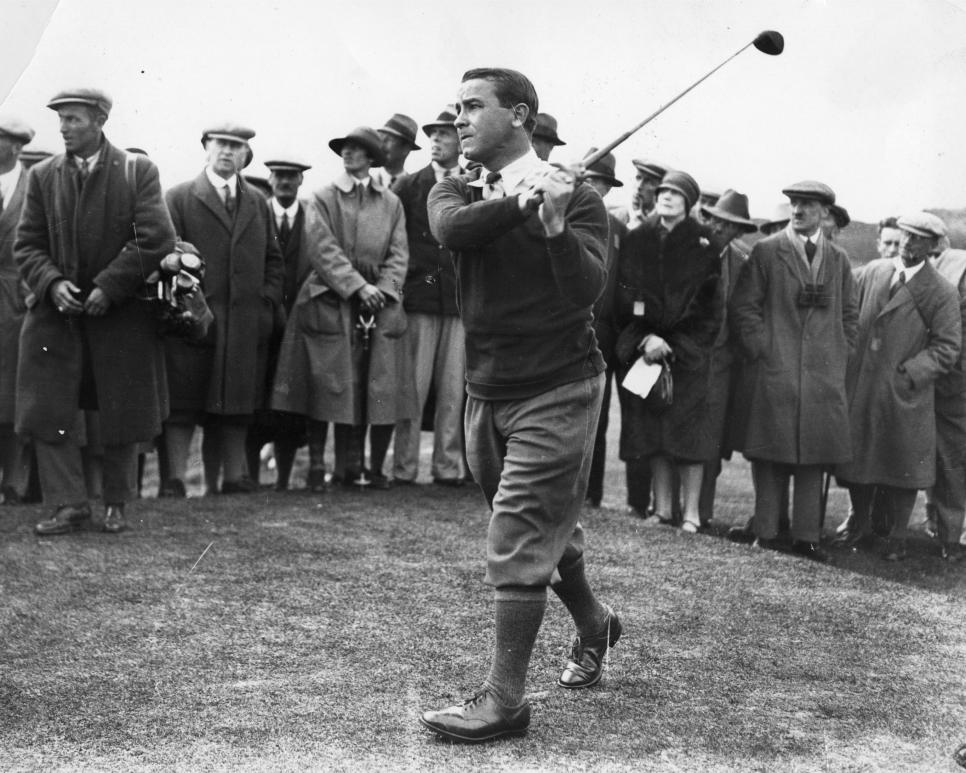
Central Press
Arguably the most iconic shot in golf history is Gene Sarazen’s 4-wood shot on the par-5 15th hole. It found the cup for a double-eagle 2, erasing Craig Wood’s three-shot lead and propelling Sarazen to the title. The club that hit that historic blow is a Jim Gallagher persimmon head with “Gene Sarazen” inscribed on the crown. The face has a waffle-like pattern, and the concave brass sole has two separate plates—one large and a smaller one—screwed into the bottom of the head.
Jack Nicklaus, 1986
MacGregor Response ZT 615 putter
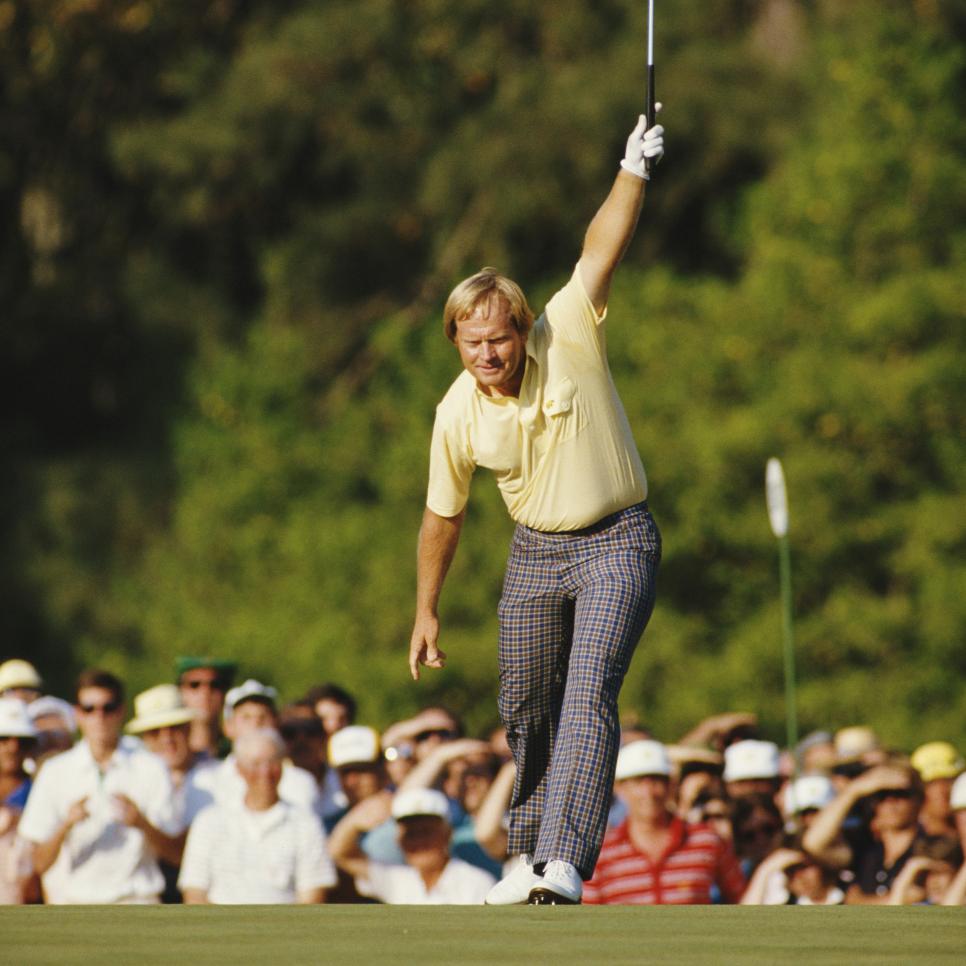
David Cannon/Getty Images
This entire article could probably be dedicated to shots Jack Nicklaus has hit at Augusta National, but we had to pick one. We opted for the “Yes, Sir!” putt in 1986 that provided the winning margin for his sixth green jacket. The putter Nicklaus wielded was noticeable, not just for its effectiveness, but its size—the mammoth MacGregor Response ZT 615. The moment of inertia of the club, which helps reduce twisting on off-center hits, led to ZT—”Zero Twisting”—being added to the putter’s name.
Larry Mize, 1987
MacGregor Jack Nicklaus Muirfield 56-degree wedge
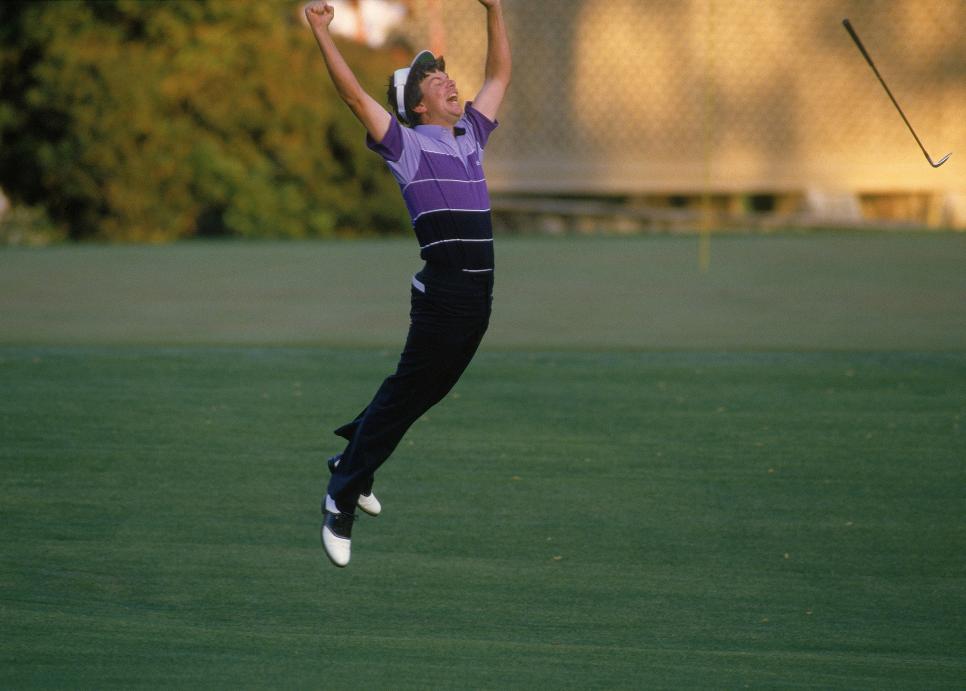
Larry Mize’s miraculous 100-foot chip-in at the 11th green to defeat Greg Norman in a playoff at the 1987 Masters stands out because it was so unexpected. The club Mize used for the shot was a MacGregor Jack Nicklaus Muirfield 56-degree wedge with a fair amount of offset. It also was a new club for Mize, who put the club in the bag just before the tournament.
Sandy Lyle, 1988
Mizuno TP-11 7-iron
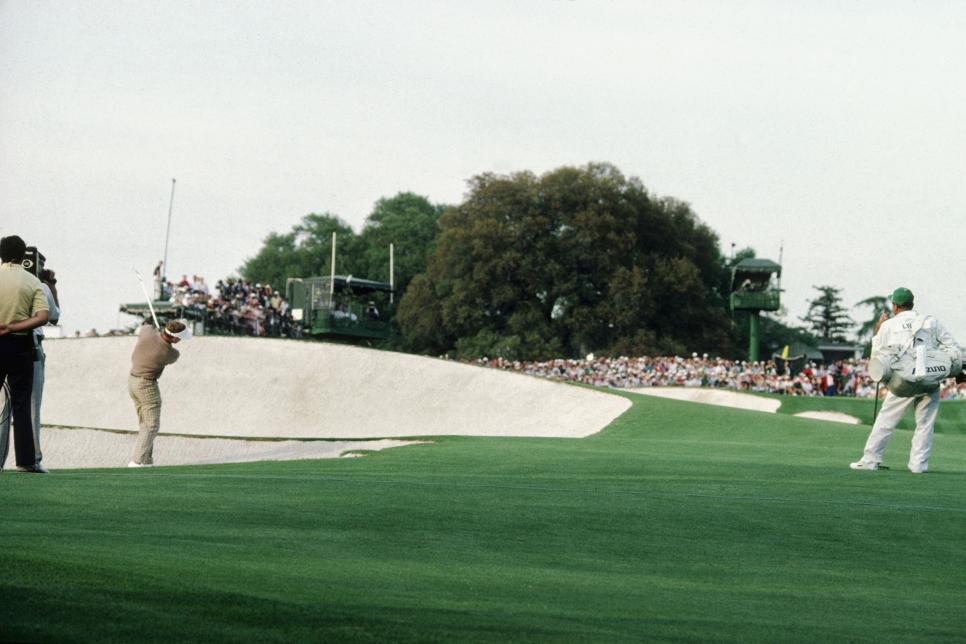
Brian Morgan
Tied with Mark Calcavecchia as he played the 72nd hole, Sandy Lyle hit his tee shot into one of the left fairway bunkers. Facing a shot of 150 yards uphill that needed to clear a steep lip, Lyle lofted a Mizuno TP-11 7-iron (the same club he used in making birdie at No. 16) and put the ball 10 feet above the hole. Lyle made the putt and won a tournament that he said afterward, “I personally thought was over.”
Mark O’Meara, 1998
Ping Anser2 putter
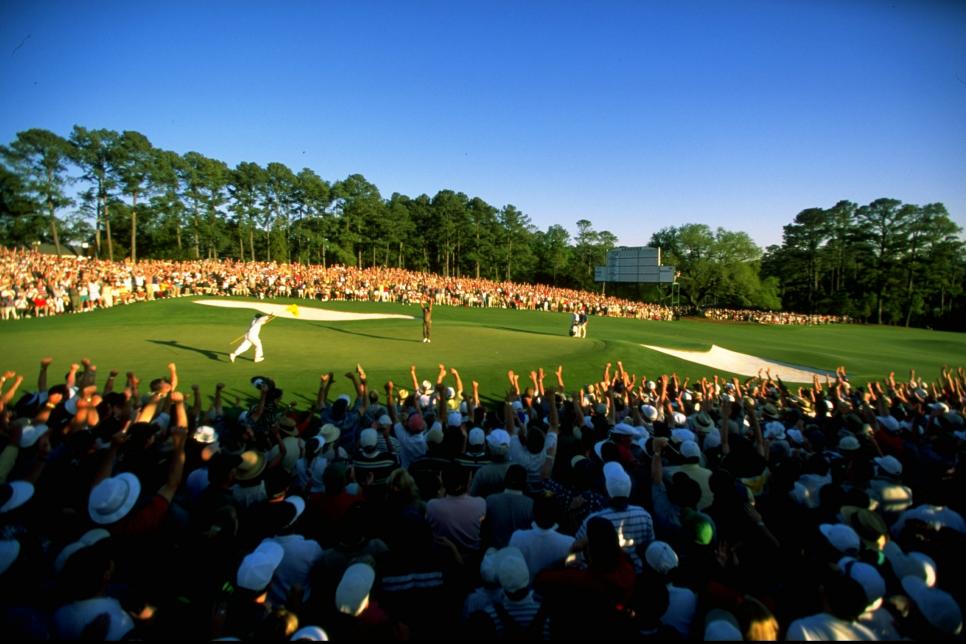
David Cannon
“I’ve got it in my own hands and I can finish it off,” Mark O’Meara thought as he lined up a 20-footer for birdie that would give him his first major title. Using a Ping Anser2 putter, O’Meara holed the putt for only the fourth walk-off win in tournament history. Unlike most Ping Ansers that have a bronze finish, O’Meara’s was silver with the Ping Man outline on the face of the club, with “Ping” engraved on the left back bumper and “Anser2” on the right bumper.
Tiger Woods, 2005
Nike TW Forged 60-degree wedge
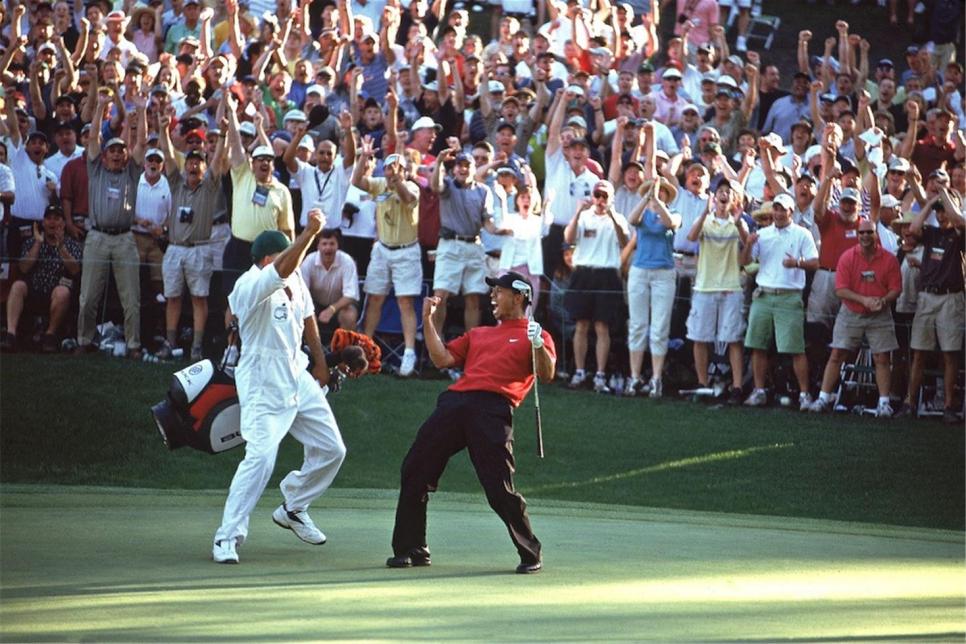
Augusta National
In the final round of the 2005 Masters, Woods hit his 8-iron tee shot over the green on Augusta National’s par-3 16th. Holding a one-shot lead over Chris DiMarco, Woods pulled his Nike TW Forged 60-degree wedge from the bag. Woods nipped the ball off the tight turf and watched as it hit the green, checked and trickled toward where it stopped on the edge of the lip—giving Nike and its Swoosh a brief commercial—before tumbling into the hole. It gave Woods a margin he needed as he bogeyed the next two holes before going on to win in a playoff over DiMarco.
Phil Mickelson, 2010
Callaway MB prototype 6-iron
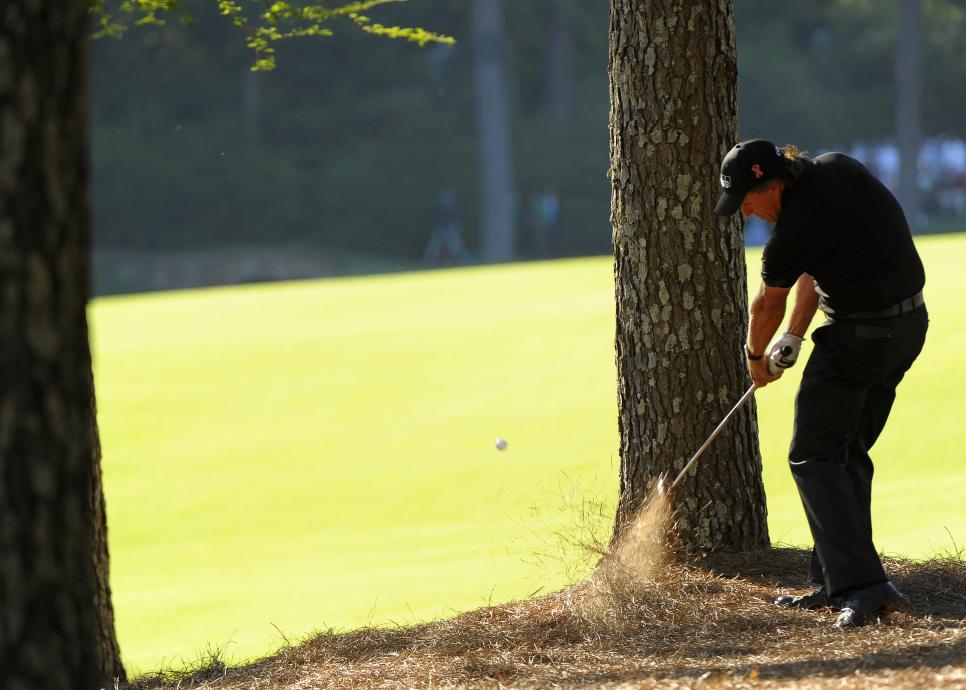
Dom Furore
Perhaps the ultimate "Phil the Thrill" moment at Augusta National. As he stood 207 yards from the green on the par-5 13th in 2010’s final round, his ball was perched on pine straw with a couple of trees in his path. Still, Lefty determined it was worth the risk to try to go through a narrow gap and go for the green. Mickelson pulled his Callaway MB prototype 6-iron and flushed the shot, rifling it through the gap in the trees and watching as it stopped some four feet from the cup.
Charl Schwartzel, 2011
Nike VR Pro X3X 54-degree wedge
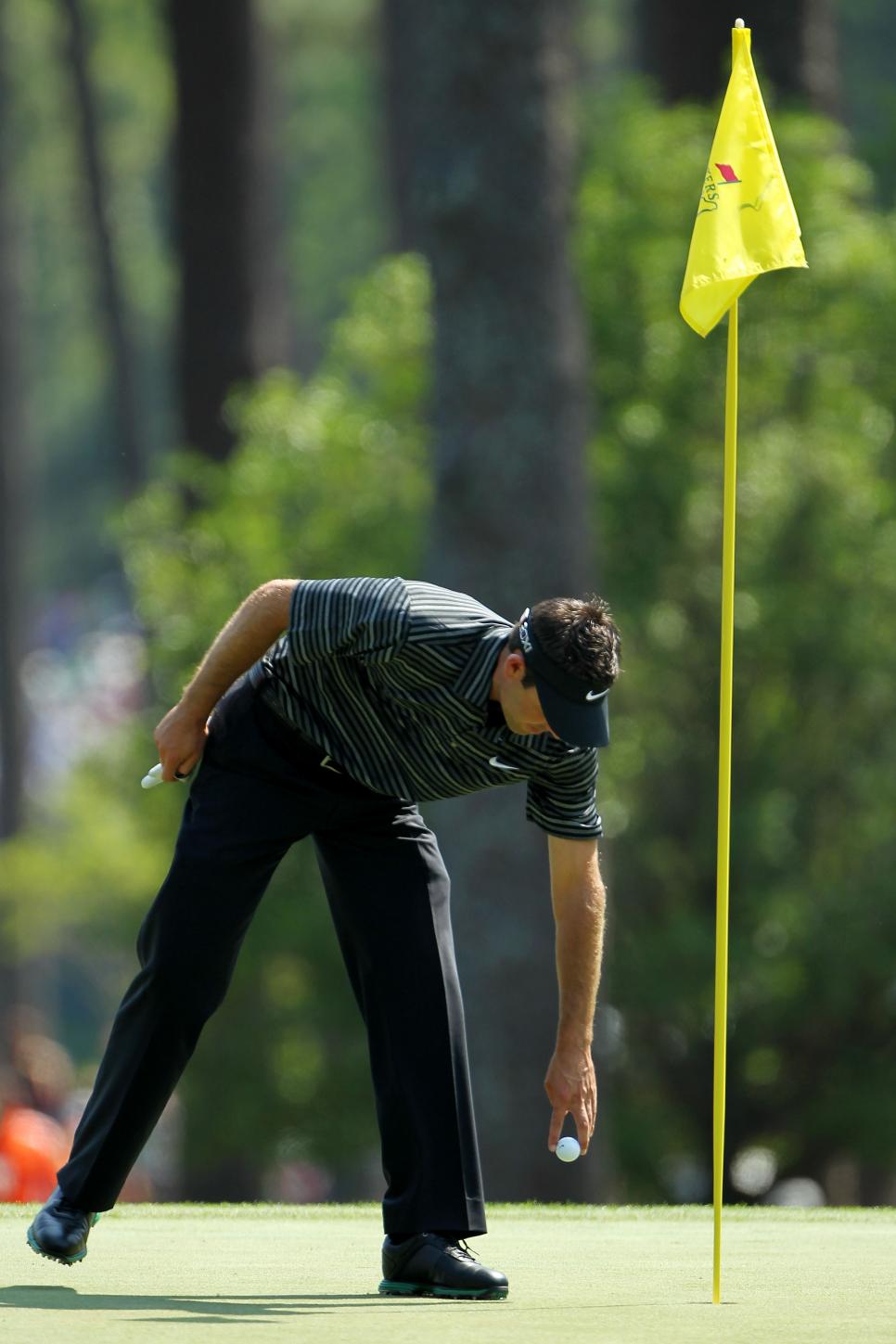
Jamie Squire
The 2011 Masters was a shootout down the stretch with Charl Schwartzel finishing with four consecutive birdies to win the title. But the South African likely wouldn’t have been in that position if not for a hole-out on No. 3 from 108 yards for an eagle 2. The shot was made with a Nike VR Pro X3X 54-degree gap wedge. The club has a bit of heel grind to add versatility in shotmaking, as well as a heavy sole grind to reduce bounce, making it an ideal club off firm, tight turf.
Bubba Watson, 2012
Ping Tour W 52-degree wedge

Streeter Lecka
Masters patrons make the trek to the spot where Bubba Watson hit his huge boomerang shot on the first hole of a playoff in 2012 for good reason. The spot is in the pine straw to the right of the 10th fairway, about 150 yards from the green, where Watson hit a snap-hook gap wedge that curved some 40 yards left-to-right, settling 12 feet from the hole and setting up his first Masters win. The club was a Ping Tour W 52-degree gap wedge with 12 degrees of bounce. The club, which features Watson’s signature pink paintfill, but is most notable for the massively oversize grip (12 wraps of tape underneath).
Adam Scott, 2013
Scotty Cameron by Titleist Futura X prototype putter
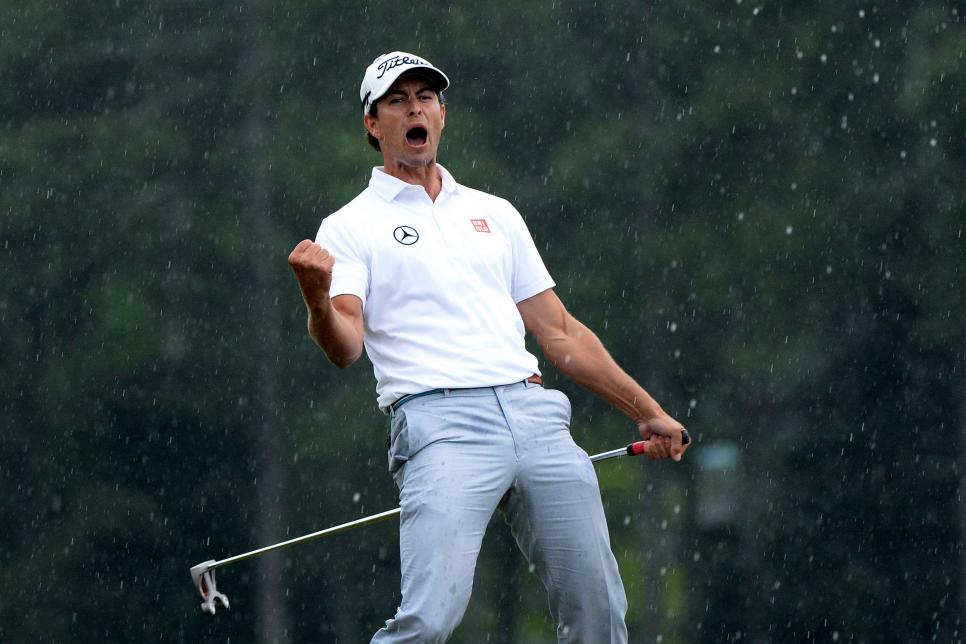
Harry How/Getty Images
When you hole a 25-foot putt on the 72nd hole that turns out to be the one you need to get into a playoff and then make a 12-footer to win your first major title, there’s little doubt what club in the bag was the gamechanger for Masters champion Adam Scott—his Scotty Cameron by Titleist Futura X prototype long putter. The putter had four adjustable stainless-steel weights positioned underneath exterior weights in the far corners of the rear bar. The added heft raised the club’s moment of inertia for greater stability. The clubhead of the Futura X was made from aluminum and had 3 degrees of loft while the length was 49 inches—making Scott the first player to win a major championship with a true broomstick putter.
Sergio Garcia, 2017
TaylorMade P750 8-iron
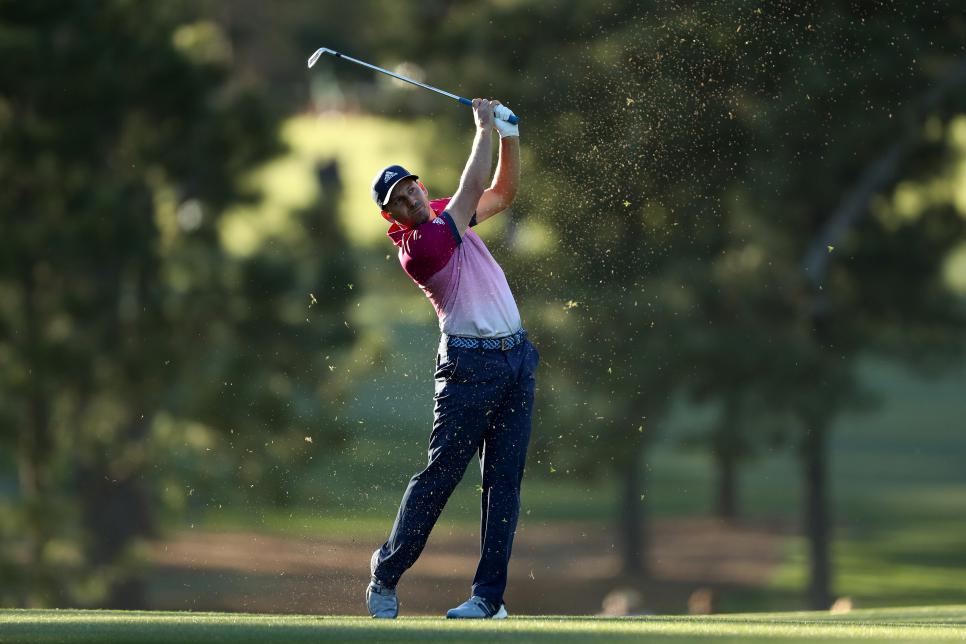
David Cannon
Sergio Garcia seemed destined to have a wonderful career, but one without a major. That changed at the 2017 Masters in no small part thanks to a flushed 8-iron shot on the par-5 15th that led to a timely eagle 3 that propelled him to victory. The iron Garcia used was a TaylorMade P750—a forged blade with a thin topline, shallow cavity and minimal offset with five grams of tungsten placed in the sole of the 3- through 7-irons to assist launch. Garcia also added his own touch to the clubs, implementing 30-gram weights in the butt end of the grip to counterbalance them to make the swingweight feel lighter.